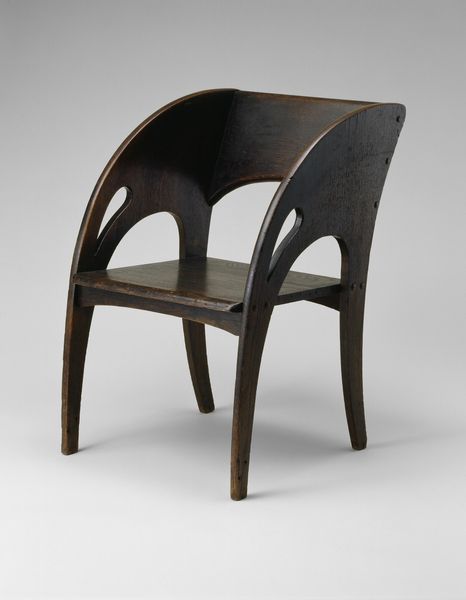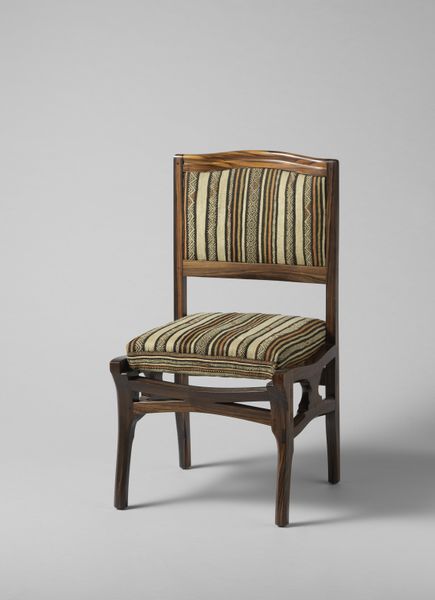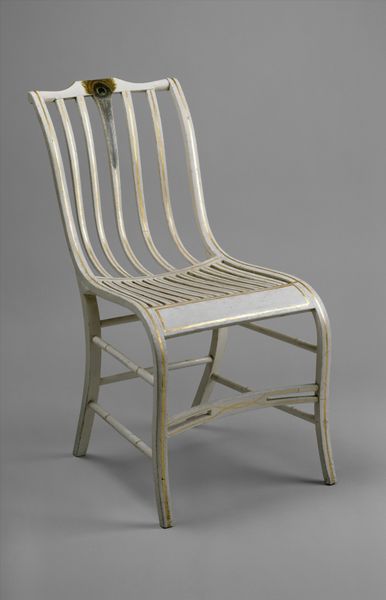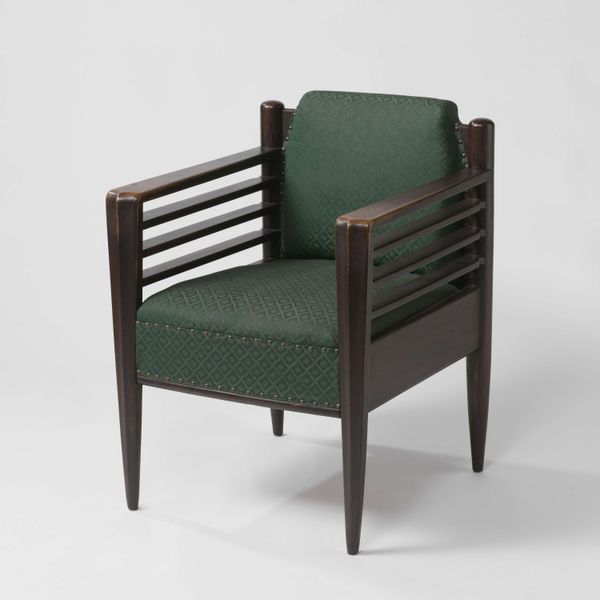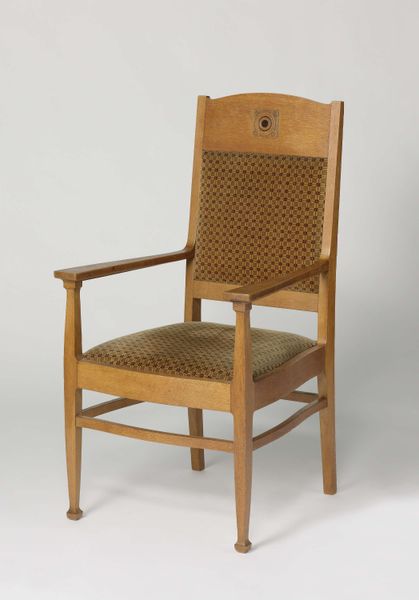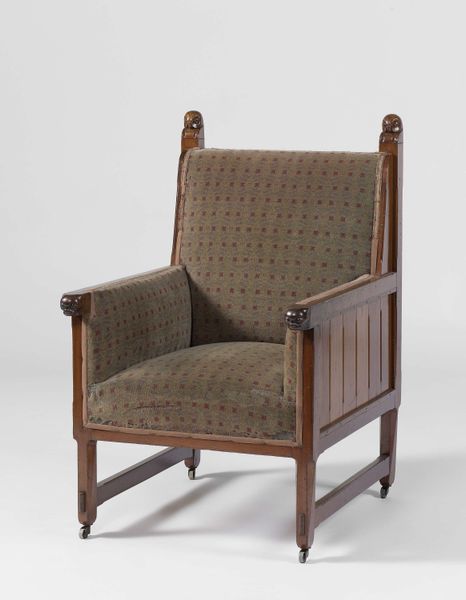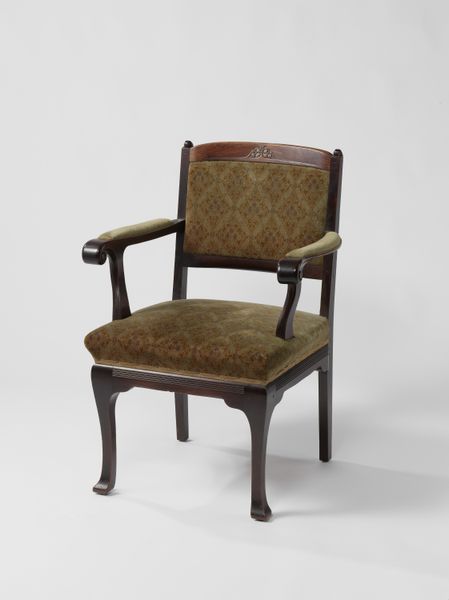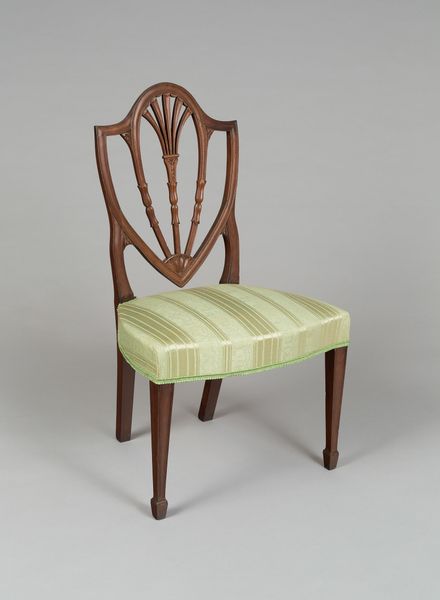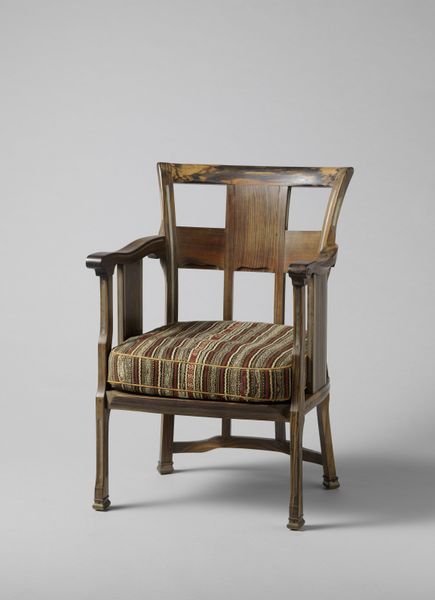
carving, wood
#
carving
#
arts-&-crafts-movement
#
furniture
#
wood
#
decorative-art
Dimensions: 86 × 75 × 56 cm (33 7/8 × 29 1/2 × 22 in.)
Copyright: Public Domain
Curator: This is an "Armchair" by David Wolcott Kendall, crafted between 1894 and 1896. Its current home is here at the Art Institute of Chicago. Editor: Well, it strikes me as utterly functional. There’s a certain rigidity, almost severity, to the geometry that underpins its design. Curator: Note how Kendall, working within the Arts and Crafts movement, clearly values structure. Observe the stark lines, the emphasis on right angles, creating a network of interconnecting support and planes. Editor: Right, and consider the means of construction. Wood carving and the weaving for the seat—honest labor, evident craftsmanship that screams against the industrial tide. It celebrates the dignity of labor, I suppose. Curator: Indeed. But the aesthetic choice shouldn't be overlooked. The chair achieves a certain Platonic ideal of 'chair-ness' without ornamentation. Editor: I’d argue the cane work introduces a level of tactility—a conscious engagement with both visual and haptic qualities through contrasting texture against the hardness of the wood. Curator: From a structural perspective, there's an articulation of load-bearing and supporting elements. The seat’s weight seems visibly distributed across the rigid frame, an honest statement about the interplay between force and resistance. Editor: True, and Kendall highlights the process by showcasing the raw wood and carving details. Each mortise and tenon joint tells a story of deliberate handwork, championing a pre-industrial mindset amidst modernization. It suggests a longing for a more holistic production approach. Curator: Precisely. There is also a conceptual rejection of mass production in favor of handcrafted authenticity. Editor: In essence, both form and construction unite, pushing the statement for integrating ethics with art in our constructed spaces. Curator: It highlights the essence of art and design intersecting—revealing a functional beauty that has transcended eras. Editor: Ultimately, this "Armchair" is more than a mere object of function, its an advocacy statement about labor and design’s vital interplay.
Comments
No comments
Be the first to comment and join the conversation on the ultimate creative platform.
